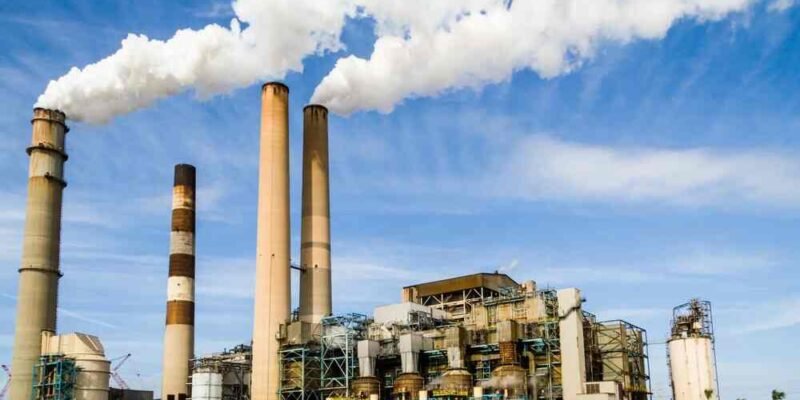Introduction to Waste Incineration
Managing industrial waste efficiently is more important than ever in today’s world. As businesses strive for sustainability and regulatory compliance, innovative solutions like waste incinerators have emerged as game changers in waste management practices. Imagine transforming unwanted materials into energy while reducing landfill reliance—sounds intriguing, right? Waste incineration addresses the growing concerns about waste disposal and aligns with eco-friendly initiatives. Let’s delve deeper into how this technology works and explore its benefits for industries looking to enhance their environmental footprint.
How Does a Waste Incinerator Work?
A waste incinerator operates on a straightforward yet effective principle. It uses high temperatures to significantly reduce waste volume. First, the waste is fed into a combustion chamber.
Once inside, it’s exposed to intense heat, typically between 850°C and 1,200°C. This extreme temperature facilitates the complete combustion of organic materials, releasing gases as the waste burns.
These gases pass through air pollution control systems that filter out harmful emissions before they’re released into the atmosphere. The result? Cleaned exhaust and reduced environmental impact.
Additionally, energy generated from incineration can be harnessed for electricity or heating purposes. Automation equipment often enhances operational efficiency by controlling feed rates and real-time monitoring processes. This streamlined operation ensures optimal performance while minimizing human error in industrial settings.
Advantages of Using a Waste Incinerator for Industrial Waste Management
Waste incinerators offer a modern solution for industrial waste management, transforming potential hazards into manageable byproducts. They significantly reduce the volume of waste, cutting it down by up to 90%. This compacting effect frees up valuable space in landfills.
Moreover, these systems provide an efficient energy recovery process. The heat generated during incineration can be harnessed to produce electricity or steam, promoting sustainability within operations.
Using a waste incinerator also minimizes the risk of groundwater contamination and air pollution associated with traditional disposal methods. Advanced filtration technologies ensure that harmful emissions are effectively captured and treated before they enter the atmosphere.
In addition, regulatory compliance is easier with proper waste processing facilities like incinerators. Industries can meet strict environmental standards while enhancing their corporate responsibility image among stakeholders and customers.
Environmental Impact and Regulations
Waste incineration plays a significant role in managing industrial waste. However, its environmental impact requires careful consideration.
Modern incinerators are designed to minimize emissions and comply with strict regulations. Advanced technologies reduce harmful pollutants released into the atmosphere. Implementing filters and scrubbers ensures that only clean air exits the facility.
Regulatory bodies continuously monitor these operations to enforce compliance with environmental standards. This oversight is crucial for maintaining public health and safeguarding ecosystems.
Moreover, many countries have adopted stringent guidelines governing ash management. Proper disposal of byproducts from the incineration process is essential to prevent soil contamination and groundwater pollution.
As industries increasingly adopt sustainable practices, understanding regulatory frameworks around waste incineration becomes vital for responsible waste management strategies. Adhering to these regulations promotes sustainability and enhances corporate reputation within eco-conscious markets.
Cost Savings and Efficiency
Implementing a waste incinerator can lead to significant cost savings for industries. By reducing the volume of waste, companies spend less on transportation and disposal fees.
Efficiency is another key benefit. Waste incineration transforms materials into energy, which can be harnessed for various operations within the facility. This not only powers processes but also decreases reliance on external energy sources.
Moreover, modern waste incinerators are equipped with automation equipment that streamlines operations. Automated systems minimize labor costs while ensuring consistent performance and safety compliance.
Reducing landfill use further alleviates financial strains associated with rising landfill taxes and regulatory fines. Investing in a waste incinerator ultimately improves budget management and resource allocation.
Types of Waste Suitable for Incineration
Various types of waste are suitable for incineration, making it a versatile solution in industrial waste management. Organic materials, such as food scraps and agricultural residues, break down effectively when subjected to high temperatures.
Hazardous waste is another category where incinerators shine. Chemicals and other toxic substances can be safely destroyed, minimizing risks to human health and the environment.
Medical waste also falls under this umbrella. Hospitals generate biohazardous materials that require careful handling. Incinerating these wastes ensures they’re rendered harmless.
Plastics can also be processed. While recycling is ideal, not all plastics are recyclable. Incineration provides an alternative disposal method that reduces landfill dependency.
Construction debris containing wood or concrete can be incinerated. This process significantly reduces the volume of material needing disposal while recovering energy.
Case Studies and Success Stories
Across various industries, waste incinerators have proven to be game-changers in managing industrial waste. One notable case comes from a manufacturing facility that faced challenges with hazardous byproducts. By implementing a state-of-the-art waste incinerator, they reduced their landfill dependency and turned waste into energy.
Another success story involves a textile company struggling to dispose of dye wastewater. Adopting an advanced incineration system allowed them to eliminate harmful compounds and comply with stringent environmental regulations effectively.
An electronics manufacturer saw significant benefits after integrating automation equipment alongside their waste incinerator. This synergy streamlined operations, enhanced efficiency, and minimized human error during disposal.
These examples showcase how tailored solutions can transform industrial waste management practices while aligning environmental objectives with operational goals.
FAQs
What are the most common questions about waste incinerators?
People often wonder how efficient these systems are. Most modern waste incinerators have high efficiency rates, reducing waste volume by up to 90%. This means less material going to landfills.
Another frequently asked question involves safety. Advanced technology ensures that emissions meet strict environmental standards. Regular monitoring is essential for maintaining compliance and ensuring public health.
Can any waste be incinerated?
Not all materials are suitable. Certain hazardous wastes require special handling before incineration can occur.
What types of facilities use waste incinerators?
They benefit a wide variety of industries, including healthcare, manufacturing, and food processing sectors. Their versatility makes them an appealing choice for effective industrial waste management solutions.
Conclusion
Waste incineration stands out as a powerful solution for industrial waste management. When managed correctly, it transforms hazardous materials into energy, reducing the volume of waste and minimizing harmful emissions. The efficiency and cost savings gained from implementing a waste incinerator can significantly enhance operational productivity.
Moreover, with stringent regulations, industries can ensure compliance while adopting sustainable practices that protect our environment. The success stories emerging from various sectors highlight the effectiveness of this technology in addressing complex waste challenges.
As we look toward future innovations and advancements in automation equipment, embracing solutions like waste incinerators will play an essential role in fostering responsible industrial operations. Embracing these technologies is not just about managing waste; it’s about paving the way for a greener tomorrow.
Do Read: Legionella Risk Assessment: Essential Guide for UK Property Managers













